How do you celebrate Christmas in Charleston and where did those traditions originate? The South is rich in history, and Charleston is no exception. Did you know that Southern states were the first to adopt Christmas as a legal holiday? (Alabama in 1836, followed by Louisiana and Arkansas in 1838.) Over the years, it’s no surprise that many regional Southern holiday traditions have spread around the country.
CHARLESTON’S POINSETTIA ROOTS
 Today we hail the poinsettia as the official plant of the Christmas season. Did you know this is thanks to a South Carolina gentleman by the name of Joel Robert Poinsett? Poinsett was in the United States House of Representatives and also served as the Minister to Mexico. While on a trip to Mexico in 1925, he discovered the festive red-colored flower. He brought it home to Charleston and introduced it as a holiday adornment. The rest is history. Today, throughout the South and the nation you will see these beautiful flowers displayed on the inside and outside of homes during the Yuletide season.
Today we hail the poinsettia as the official plant of the Christmas season. Did you know this is thanks to a South Carolina gentleman by the name of Joel Robert Poinsett? Poinsett was in the United States House of Representatives and also served as the Minister to Mexico. While on a trip to Mexico in 1925, he discovered the festive red-colored flower. He brought it home to Charleston and introduced it as a holiday adornment. The rest is history. Today, throughout the South and the nation you will see these beautiful flowers displayed on the inside and outside of homes during the Yuletide season.
CITRUS FOR THE SEASON
 To this day, it’s a Southern holiday tradition for Santa to leave some citrus fruit in children’s stockings. No, it’s not a gimmick to take up space. Years ago, finding citrus in your stocking in the middle of winter was a luxury. Citrus fruits were only available during certain seasons of the year, so receiving an orange at Christmas was a special and expensive treat. Decorating wreaths, trees, and holiday decor with different citrus fruits is still a tradition today. In fact, take a tour around downtown Charleston or visit one of the museum houses to see citrus and evergreen decorations on the outsides as well as interiors of historic Charleston homes. To view some beautiful examples, try one of these tours. Or if you can’t make it in person, you can watch the Garden Club of Charleston create their annual traditional holiday decorations at the Joseph Manigault House.
To this day, it’s a Southern holiday tradition for Santa to leave some citrus fruit in children’s stockings. No, it’s not a gimmick to take up space. Years ago, finding citrus in your stocking in the middle of winter was a luxury. Citrus fruits were only available during certain seasons of the year, so receiving an orange at Christmas was a special and expensive treat. Decorating wreaths, trees, and holiday decor with different citrus fruits is still a tradition today. In fact, take a tour around downtown Charleston or visit one of the museum houses to see citrus and evergreen decorations on the outsides as well as interiors of historic Charleston homes. To view some beautiful examples, try one of these tours. Or if you can’t make it in person, you can watch the Garden Club of Charleston create their annual traditional holiday decorations at the Joseph Manigault House.
FRIED TURKEY, OYSTERS, & PECAN PIE
 What would a Southern meal be without any of these delicacies? Fresh oysters are popular during the holiday season because their harvest is best during the coldest time of year. (Remember the old adage that oysters are good during months that have an “R” in their names.) Deep frying as a preparation for turkey also originated in the South. And don’t forget the pecan pie for dessert. The documented history of this recipe dates back to the 1880s. Legend says the French in New Orleans made a version of it after Native Americans introduced them to the pecan tree. Today this gooey, delicious Southern treat has spread across the country and is a staple this time of year. Visit Southern Living for a variety of delicious pecan pie recipes and other traditional Southern holiday foods.
What would a Southern meal be without any of these delicacies? Fresh oysters are popular during the holiday season because their harvest is best during the coldest time of year. (Remember the old adage that oysters are good during months that have an “R” in their names.) Deep frying as a preparation for turkey also originated in the South. And don’t forget the pecan pie for dessert. The documented history of this recipe dates back to the 1880s. Legend says the French in New Orleans made a version of it after Native Americans introduced them to the pecan tree. Today this gooey, delicious Southern treat has spread across the country and is a staple this time of year. Visit Southern Living for a variety of delicious pecan pie recipes and other traditional Southern holiday foods.
What holiday treats and traditions does your family celebrate? Please share in the comments. Disher, Hamrick & Myers wishes HAPPY HOLIDAYS to all!
If this discussion of Southern holidays makes you yearn for a home in beautiful Charleston, SC, give us a call at 843.577.4115. Disher, Hamrick & Myers has been a leader in Charleston real estate since 1984. From historic downtown to the islands, we will help you find your dream property!


 The most important thing you can do for your lawn is continue to mow until it goes dormant. This will keep the grass at a manageable height, as well as remove any excess debris that has built up. Be sure not to scalp your lawn, however; removing too much of the blade can damage your grass and hinder new growth. Warm season grasses found in the Southeast (like Bermuda, Centipede, and Zoysia) should be mowed to around 1-2 inches tall, depending on type. And remember the rule not to cut more than a third of your grass’s height at one time. Your lawn will continue to grow throughout the winter, albeit at a much slower rate, until the temperature drops below 40 degrees.
The most important thing you can do for your lawn is continue to mow until it goes dormant. This will keep the grass at a manageable height, as well as remove any excess debris that has built up. Be sure not to scalp your lawn, however; removing too much of the blade can damage your grass and hinder new growth. Warm season grasses found in the Southeast (like Bermuda, Centipede, and Zoysia) should be mowed to around 1-2 inches tall, depending on type. And remember the rule not to cut more than a third of your grass’s height at one time. Your lawn will continue to grow throughout the winter, albeit at a much slower rate, until the temperature drops below 40 degrees. Raking is no one’s favorite task, but it does create a healthier environment and prevents fungal disease. Always rake before rain is expected. If leaves are left to create a wet mat, they will invite insects that may travel into your home. Be sure your last rake of the year isn’t too early (before all leaves have fallen) or too late (when they’ve started to decompose).
Raking is no one’s favorite task, but it does create a healthier environment and prevents fungal disease. Always rake before rain is expected. If leaves are left to create a wet mat, they will invite insects that may travel into your home. Be sure your last rake of the year isn’t too early (before all leaves have fallen) or too late (when they’ve started to decompose). Aerating is the process of punching holes in your lawn to allow nutrients, air, and water to reach the core of your soil. Doing this before applying fertilizer or weed killer helps those products absorb, rather than being washed away.
Aerating is the process of punching holes in your lawn to allow nutrients, air, and water to reach the core of your soil. Doing this before applying fertilizer or weed killer helps those products absorb, rather than being washed away.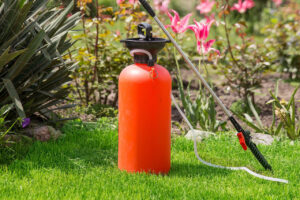 If you only fertilize your lawn once a year, the best time to do so is fall. This will give your lawn the right amount of nutrients, oxygen, and moisture to grow come spring. If you wait until spring, your lawn will miss out on the nutrients it needs to survive through winter. Be sure to allow enough time for nutrients to absorb into the ground, where grassroots need them most, before watering your lawn, which can wash them away.
If you only fertilize your lawn once a year, the best time to do so is fall. This will give your lawn the right amount of nutrients, oxygen, and moisture to grow come spring. If you wait until spring, your lawn will miss out on the nutrients it needs to survive through winter. Be sure to allow enough time for nutrients to absorb into the ground, where grassroots need them most, before watering your lawn, which can wash them away.
 If you want to avoid the sweat altogether, hiring professional movers when
If you want to avoid the sweat altogether, hiring professional movers when  The
The  The first step in choosing the right real estate agent is ensuring that they deeply understand the local luxury market. Luxury properties often have unique features, require
The first step in choosing the right real estate agent is ensuring that they deeply understand the local luxury market. Luxury properties often have unique features, require  Marketing luxury properties requires a different approach than standard homes. The right agent will have a
Marketing luxury properties requires a different approach than standard homes. The right agent will have a  Negotiation is crucial to any real estate transaction, but is especially so in the luxury market. The right agent must have excellent negotiation skills to ensure you get the best possible deal. They should advocate for your interests while maintaining a professional and respectful demeanor.
Negotiation is crucial to any real estate transaction, but is especially so in the luxury market. The right agent must have excellent negotiation skills to ensure you get the best possible deal. They should advocate for your interests while maintaining a professional and respectful demeanor. The 3-story single house combines Neoclassical and Classical Revival elements into a transitional style between the British Georgian and the more American Adams style. Constructed of brick with a scored stucco exterior, the original part of the main house follows the classic Charleston single floor plan with double piazzas and a particularly exuberant piazza door. The interior door is simpler, with bullseye medallions. Likewise, the piazza columns are plainer Tuscan order, and considerably wider than most in downtown Charleston. Inside, a center stair hall is flanked by living and dining rooms on the first floor and 2 corresponding bedrooms on each of the upper levels.
The 3-story single house combines Neoclassical and Classical Revival elements into a transitional style between the British Georgian and the more American Adams style. Constructed of brick with a scored stucco exterior, the original part of the main house follows the classic Charleston single floor plan with double piazzas and a particularly exuberant piazza door. The interior door is simpler, with bullseye medallions. Likewise, the piazza columns are plainer Tuscan order, and considerably wider than most in downtown Charleston. Inside, a center stair hall is flanked by living and dining rooms on the first floor and 2 corresponding bedrooms on each of the upper levels.

 Start by assessing your antique furniture to determine which pieces are fragile. Also identify any delicate parts that might require extra protection. Then document the current condition of your furniture with photos and detailed notes. This will not only help you remember how each piece looked before the move, but it’s important for
Start by assessing your antique furniture to determine which pieces are fragile. Also identify any delicate parts that might require extra protection. Then document the current condition of your furniture with photos and detailed notes. This will not only help you remember how each piece looked before the move, but it’s important for 
 You’ll want to hire professional movers who have specific experience in transporting antique furniture. Research and vet moving companies thoroughly, looking for those with positive reviews as well as specialized services for antiques. You can further protect yourself with moving insurance. Understand the different
You’ll want to hire professional movers who have specific experience in transporting antique furniture. Research and vet moving companies thoroughly, looking for those with positive reviews as well as specialized services for antiques. You can further protect yourself with moving insurance. Understand the different  Loading and unloading antique furniture requires special care. Make sure each piece is handled gently and securely placed into the moving truck. The transportation environment also needs to be ideal for antiques, avoiding exposure to damaging temperatures and moisture. Properly secure all items to prevent shifting during transit and reduce the risk of scratches, dents, and other forms of damage.
Loading and unloading antique furniture requires special care. Make sure each piece is handled gently and securely placed into the moving truck. The transportation environment also needs to be ideal for antiques, avoiding exposure to damaging temperatures and moisture. Properly secure all items to prevent shifting during transit and reduce the risk of scratches, dents, and other forms of damage.
 These moderately tall shrubs boast colorful flowers that bloom in the winter. One of the most appealing attributes of the camellia family is that they are evergreen. In the Lowcountry climate, the leaf portion of stays green year-round.
These moderately tall shrubs boast colorful flowers that bloom in the winter. One of the most appealing attributes of the camellia family is that they are evergreen. In the Lowcountry climate, the leaf portion of stays green year-round. The azalea has provided the most popular spring color display in South Carolina for centuries. Each spring, thousands of avid fans across the south flock to Summerville’s
The azalea has provided the most popular spring color display in South Carolina for centuries. Each spring, thousands of avid fans across the south flock to Summerville’s 
 Another species of flowering landscape foliage prevalent in the Lowcountry is the dogwood tree. Many native species grow wild in surrounding wooded areas. The two most common colors of its flowers are pink and white. Old dogwood trees often have an under layer of azaleas augmenting their spring display. The dogwood’s flowering is a signal of spring.
Another species of flowering landscape foliage prevalent in the Lowcountry is the dogwood tree. Many native species grow wild in surrounding wooded areas. The two most common colors of its flowers are pink and white. Old dogwood trees often have an under layer of azaleas augmenting their spring display. The dogwood’s flowering is a signal of spring. Tickets are less expensive for weekday performances than for those on the weekends.
Tickets are less expensive for weekday performances than for those on the weekends.
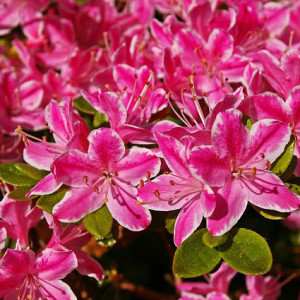 Want to catch a glimpse of azaleas in full bloom? You’ll have plenty of opportunities to view these shade-tolerant blooms in Charleston, where they blossom for several weeks. Azalea Park in nearby Summerville is filled with hot pink azaleas, as well as other flowering plants like lavender, wisteria and white dogwoods. The annual
Want to catch a glimpse of azaleas in full bloom? You’ll have plenty of opportunities to view these shade-tolerant blooms in Charleston, where they blossom for several weeks. Azalea Park in nearby Summerville is filled with hot pink azaleas, as well as other flowering plants like lavender, wisteria and white dogwoods. The annual 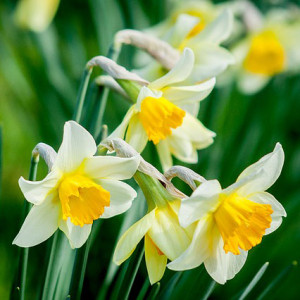

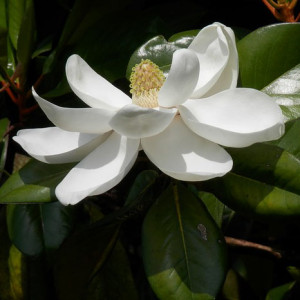
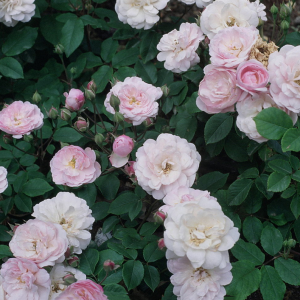

 To effectively downsize, you first need to
To effectively downsize, you first need to  Now that you have determined what items will be coming with you, you need to consider the dimensions of your new Charleston home. Start by measuring each room, noting any architectural features such as alcoves or bay windows. Then create a floor plan to visualize how your furniture will fit in each space.
Now that you have determined what items will be coming with you, you need to consider the dimensions of your new Charleston home. Start by measuring each room, noting any architectural features such as alcoves or bay windows. Then create a floor plan to visualize how your furniture will fit in each space. Once you know your new home’s layout, it’s time to evaluate your current furniture to determine what will fit and what won’t. Large items like king beds, china cabinets, and sectional sofas may not be suitable in your smaller space. Instead, opt for multipurpose pieces and storage solutions that will better meet the needs of your new lifestyle.
Once you know your new home’s layout, it’s time to evaluate your current furniture to determine what will fit and what won’t. Large items like king beds, china cabinets, and sectional sofas may not be suitable in your smaller space. Instead, opt for multipurpose pieces and storage solutions that will better meet the needs of your new lifestyle.